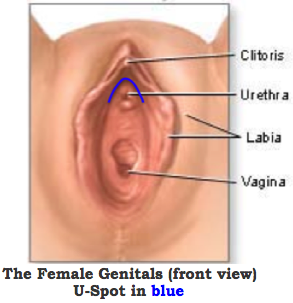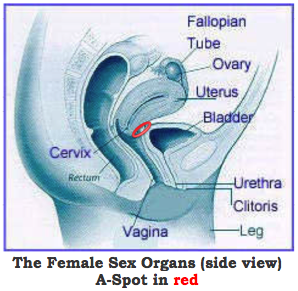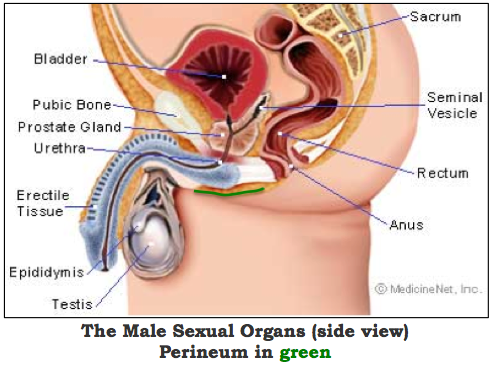Let’s Talk!
September 14th, 2009 was the premiere of The Dr. Oz Show. One of the topics discussed was men’s and women’s erogenous zones. Two audience members (a man and a woman) were asked to identify the common erogenous zones of the opposite sex. Areas such as the genitals and breasts were selected, but neither one identified the brain as the most important one.
Dr. Oz stated that currently, only a third of American women consistently have orgasms. He also mentioned that one of the main reasons for this phenomenon is that adult females do not know their own bodies. From my perspective, this observation can be applied to most women and men in North America.
The word erogenous comes from the Greek word “eros†meaning love and “genein†meaning to produce. Erogenous zones are areas of the human body that are highly sensitive because they tend to have a lot of nerve endings. Various kinds of stimulations of these areas may result in sexual excitement that can lead to orgasms. Since the skin is the largest organ on the body, and each person is different, there are a great number of erogenous zones.
Most people are aware of the common erogenous zones: lips, ears, necks, nipples, backs, inner thighs, buttocks, hands, and feet. Women tend to have thinner skin and often require a gentler touch than men. Areas, where there are a lot of hair follicles (i.e., the genitals), are more sensitive to touch because these follicles amplify sensations. The brain is considered the “sexiest†organ because the sexual desire for both males and females starts in our heads. Also, it is important to note that orgasms are experienced in the brain, not in a particular body part.
There are erogenous zones in females and males that are more difficult to locate. We will look at a few that are found in the genital area.
The first one is the elusive and controversial Gräfenberg Spot or G-Spot. According to the German gynecologist Ernst Gräfenberg (the spot is named after him), it is one to three inches inside the vagina, on the front wall. After a woman is aroused, this area grows by 50%. If gentle pressure is applied to this spongy tissue, it can produce a deeper orgasm and female ejaculation. Some researchers have speculated that erectile tissue around the urethral tube is the G-spot. Also, the ejaculate is produced by the paraurethral glands (or Skene’s gland) that are located at the G-Spot. This may explain why women feel a need to urinate, although no urine comes out of the urethral opening.
The U-Spot is located on either side and on top of the urethral opening (see diagram below). American clinical researchers located this area a few years ago. The name refers to the fact that this erogenous zone surrounds the urethra from which urine is expelled. When gently stimulated, it can bring on an intense erotic response.
 The A-Spot or Anterior Fomix Spot is located between the cervix and the bladder (see diagram below). It is found at the innermost part of the vagina (4-5 inches), on its front wall. The A-Spot is also referred to as the “degenerated prostate†because it is equal to the male prostate gland.
The A-Spot or Anterior Fomix Spot is located between the cervix and the bladder (see diagram below). It is found at the innermost part of the vagina (4-5 inches), on its front wall. The A-Spot is also referred to as the “degenerated prostate†because it is equal to the male prostate gland.
 A Malaysian physician discovered this spot in 1993. According to this doctor, direct stimulation of this spot can bring on lubrication in 5-10 seconds and orgasm in 1 minute. This unusual reaction is due to the fact that it is a local reflex mechanism in the vagina and does not require input from the brain. The A-Spot differs from the clitoris in that there is no over-sensitivity after an orgasm.
A Malaysian physician discovered this spot in 1993. According to this doctor, direct stimulation of this spot can bring on lubrication in 5-10 seconds and orgasm in 1 minute. This unusual reaction is due to the fact that it is a local reflex mechanism in the vagina and does not require input from the brain. The A-Spot differs from the clitoris in that there is no over-sensitivity after an orgasm.
Some people have heard of the G-spot in men. It is essentially where the prostate gland is located, and it can be stimulated through the anus. The most convenient way to reach this spot is by gently inserting a lubricated finger 2 inches inside the anus, and slightly curving it downwards. A G-spot triggered orgasm tends to be more intense than a regular one.
A less know the erogenous zone in men is the frenulum (see diagram below). It is an elastic band of tissue under the glans (tip) of the penis. The frenulum connects the foreskin to the head of the penis.
This area is very sensitive to light touch and may cause an intense orgasm if repeatedly stimulated. The last erogenous zone is the perineum (see diagram below). It is located between the scrotum and the anus. By applying firm pressure on this area, the prostate gland may be stimulated. This erogenous zone should be touched just before ejaculation to increase the intensity of the orgasm.
 The human body is more sensual than most people believe. Almost every few years, another erogenous zone is discovered. I hope you will have endless hours of toe-curling erotic pleasure!
The human body is more sensual than most people believe. Almost every few years, another erogenous zone is discovered. I hope you will have endless hours of toe-curling erotic pleasure!
Interested in further exploring this topic? Buy the book Erotic Massage and/or the DVD Oral Sex for Couples.
Literary Truths
Here are ways to familiarize yourself with your erogenous zones:
- Know your own body: you are unique. By discovering your sensitive areas you will be able to better guide your partner on how to pleasure you.
- Know your partner’s body: his body is very different from yours. You should ask him specifically where and how he wants to be stimulated.
- Relax: if you are stressed, the blood will be redirected to your extremities, away from many of your erogenous zones. Relaxation exercises (i.e., meditation and deep breathing) help maximize your ability to feel erotic pleasure.
- Explore different types of stimulation: try a soft and firm touch. You can experiment with light scratching, sucking, pinching, cold (i.e., ice cube)…etc, and find out what is most enjoyable.
- Rotate the areas of stimulation: touch any erogenous zone for short periods of time (i.e., 30 seconds) or the skin will become less sensitive. When you come back to a previous area, it will be more receptive.
- Enjoy the process: the goal is to experience erotic pleasure, not to rush to orgasm. Delaying orgasm as much as possible will bring on a more intense climax.
Truth in Motion
References
Alex Comfort, The Joy of Sex, Crown Publisher, New York, 2008, 288 p.
The Clitoris, A-Spot, G-Spot, and U-Spot
The Female Reproductive Organs
The Five Secrets of Sexual Touch
Resnick, Stella. “Sexual pleasure: the next frontier in the study of sexuality. ” SIECUS Report. 30.4 (April-May 2002): 6(6).